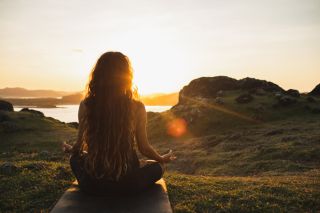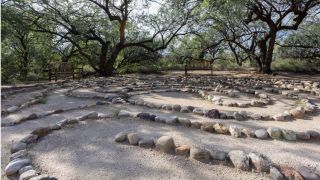
I once asked the Dalai Lama whether he used meditation to reduce stress. He shook his head and remained silent. His translator explained that stress was not a word in the Buddhist tradition.
I was moderating a panel at the Mind & Life Institute’s XIII conference exploring the “Science and Clinical Applications of Meditation.” My charge was to ask whether meditation could be used to reduce stress and reduce inflammatory illness. But minutes before we were to go on stage, I was told that I could not use the word stress. How, I thought, could I moderate a panel on stress without using that word?
I decided to confront the issue head-on. I asked the Dalai Lama what he used meditation for if he didn’t use it to reduce stress. Without hesitation, he answered: to enhance love and compassion. From the brain’s point of view, enhancing the positive—love and compassion—is a very effective way of countering and reducing stress. It works by activating the dopamine reward and anti-pain endorphin regions of the brain.

Another way to counter the stress response is to breathe deeply. Most forms of meditation start with deep breathing, which triggers the relaxation response by activating the vagus nerve and putting the brakes on the adrenalin component of the stress response.
Dr. Richard “Richie” Davidson, who pioneered neuroscientific studies of the Dalai Lama’s meditating monks and co-led the Mind & Life conferences, likes to say that the word “meditation” is like the word “sports.” There are many kinds of meditation, just as there are many kinds of sports. The Dalai Lama’s compassion meditation is one. There is also Jon Kabat-Zinn’s mindfulness meditation and Zen meditation.
They all start with deep, slow breathing. Simply paying attention to the breath can also reduce your stress. Or you can actively engage the breath with Dr. Andrew Weil’s 4-7-8 breathing technique.

If you’re still anxious and having trouble focusing on your breath, try a walking meditation—like walking a labyrinth. Different from a maze, which is a powerful trigger of the stress response, a labyrinth is simply a pattern on the floor that you follow around the circle to the center and out again. This slows you down, slows your breathing, makes you focus on walking, and empties your mind—all elements of meditation. You can search the internet for a labyrinth near you—there are many in local churches or in sacred healing gardens.
Another way to get into a meditative state and reduce stress is to take a walk in nature.
Slow walking in a forest, also known as forest bathing, slows you down. It helps you breathe deeply and inhale the scents of the many biogenic volatile organic compounds released from plants before and after rain. These compounds have a calming effect and are nature’s own aromatherapy.

Listening to the sounds of nature—the birds, the wind in the trees, the crunch of the leaves underfoot—all connect you to a larger world, help you to focus on the moment, and reduce your stress in doing so.
What if you can’t go out in nature? If you’re stressed and anxious at night, try listening for a hooting owl to connect to nature, and if there are no owls in your neighborhood, you can download nature sounds from the internet or try guided imagery to take you to a favorite calming place you’ve been.
If your window looks out into nature—a tree, a garden, a desert landscape—let your mind wander as you look at the view. It’s not daydreaming or being lazy; it’s a micro-meditation.
Focus on each detail—leaves fluttering in the breeze, sun glinting off them, a bird that flits by, or a squirrel that jumps from branch to branch. One time, when I felt very stressed, as I watched the birds in my garden, the thought crossed my mind that eons ago, they used to be dinosaurs—and now they were tiny creatures, no longer threatening, just little “dinosaurs in the trees.” That put my troubles into perspective, and I calmed down.

The Zen monks designed their tea houses to have views of nature and the changing seasons, reminding them that all things change and return again. The spaces are small and quiet—a perfect atmosphere for meditation. The monks taught respect for all: for every person in the room and for every item in the tea ceremony—the cups, the teapot, the tea itself.
So, for another micro-meditation, try drinking tea. But don’t just drink it; create a micro-meditation moment, the way Zen master Suzuki Roshi taught at the San Francisco Zen Center in the late 1960s and early ’70s. I do this every morning at breakfast on my patio. I cradle the cup in my hand and watch the steaming liquid as it slowly pours into my cup before savoring the rich aroma and taste. It helps me start the day centered and calm.
In this sense, the Zen and Dalai Lama’s philosophies coincide with the core of every religion: love, compassion, loving-kindness, and gratitude for what you have and for those around you. To reduce your stress, start the day with a micro-meditation like the Choctaw blessing. Face each of the four directions and up and down. Be grateful for what you see and what you have—for the mountains and hills, trees and cacti, sea and sky, sun and moon, for your home and for the people you love—and you will be able to better face the day in a place of calm.
